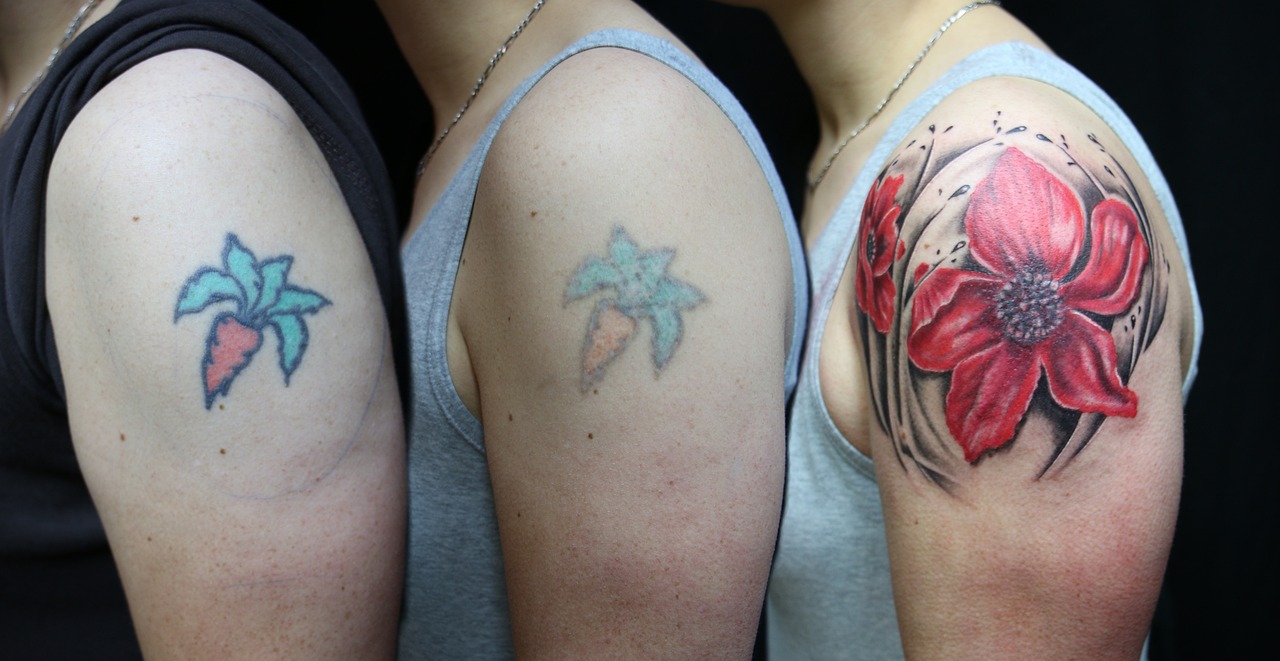Looking at Your Options
Is it hard to remove a tattoo? Thanks to us using advanced technology like Picoway laser tattoo removal, the process has never been easier or more effective. However, some tattoos do present more of a challenge than others.
We’re often asked by our clients if their tattoo will be hard to remove, so we thought we would run through some of the trickiest types that we have come up against. We’ll then look at how choosing the right team and the right tattoo removal laser can make all the difference.
Multicoloured Tattoos
Brighter colours absorb laser energy differently from darker inks, and this can make them harder to break down. Picoway laser tattoo removal allows us to target a broader range of colours more effectively, but a tattoo with lots of different shades will take longer to remove than, say, one done in simple black ink.
White Ink Tattoos
White ink is perhaps the most challenging pigment to treat. It reflects laser light rather than absorbing it, which makes it difficult for the tattoo removal laser to really take hold and deliver fast results. White ink can react in one of two ways. It sometimes doesn’t react at all; however, when all other ink has been removed, it is hardly visible. On other occasions, it oxidises and turns grey.
If this happens, we would then recommend further treatments in order for the grey to fade. It is important to note that the removal of faded white ink sometimes takes more treatments than a standard grey ink. We take a really cautious approach with white ink tattoos, so we can avoid a darkening process known as oxidation. We’ll also be honest with you about the kind of results you can expect.
Cover-Up Tattoos
Many people have a tattoo covered up before realising that, really, they just want it gone completely. Cover-up tattoos see an artist layering new ink over an older design, and this simply means that there are more layers of ink for the laser tattoo removal to progress through. So, you can expect a longer treatment timeline.
Tattoos on Lower Limbs or Hands
Tattoos on areas with limited blood circulation, such as the feet and ankles, along with hands, tend to fade more slowly. That’s because your body’s immune system is what flushes out the broken-down ink particles, and areas with poorer circulation are less efficient at this. So, again, you will probably need more sessions.
Newer Tattoos
Quickly come to the realisation that your new tattoo isn’t right for you? Then you can expect the removal process to take a little longer. Older tattoos have already broken down somewhere, with the passing of time doing part of the work for you. So, if you have had a tattoo for years, don’t ever assume it’s too late to remove it!
Why Choose Us?
By choosing a clinic that uses Picoway, you’re giving yourself the best possible chance of successful removal. Yes, this even applies to tattoos that are considered difficult. We also get to know each of the clients who choose us, so we can put together a treatment plan that protects your skin and gives us the best possible chance of removing the tattoo completely.
Talk to Us
No matter what kind of tattoo you have, laser tattoo removal is still a highly effective solution. Some just require a little more care than others! To find out more about how we could help you, please get in touch today.
